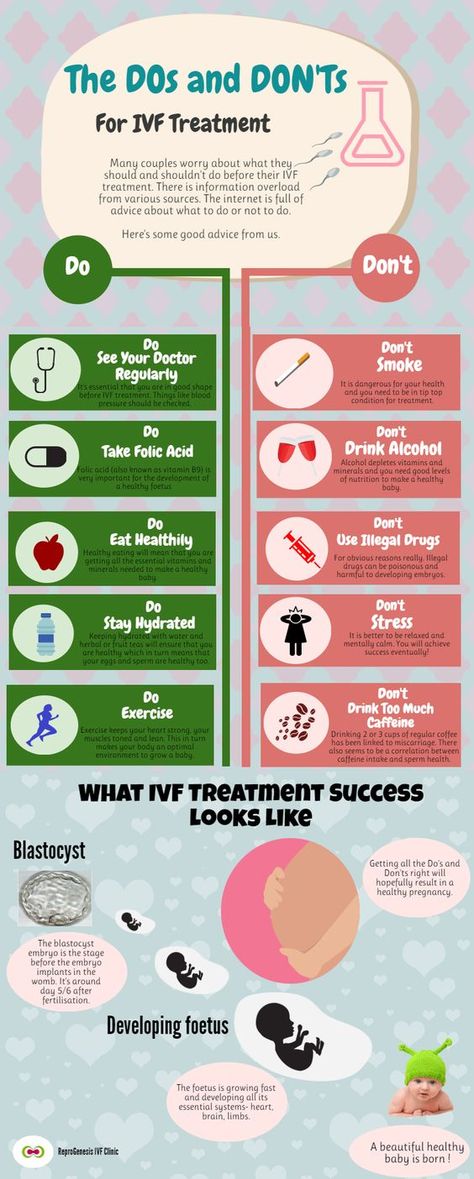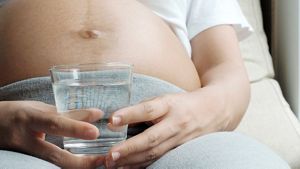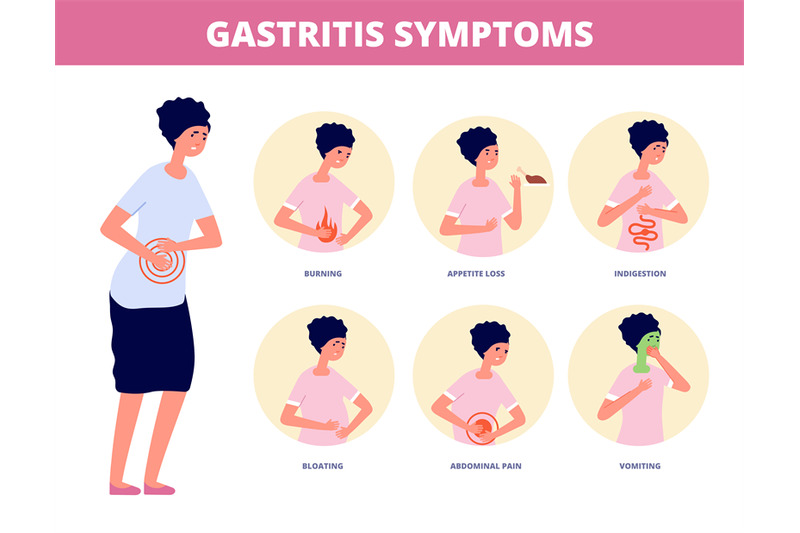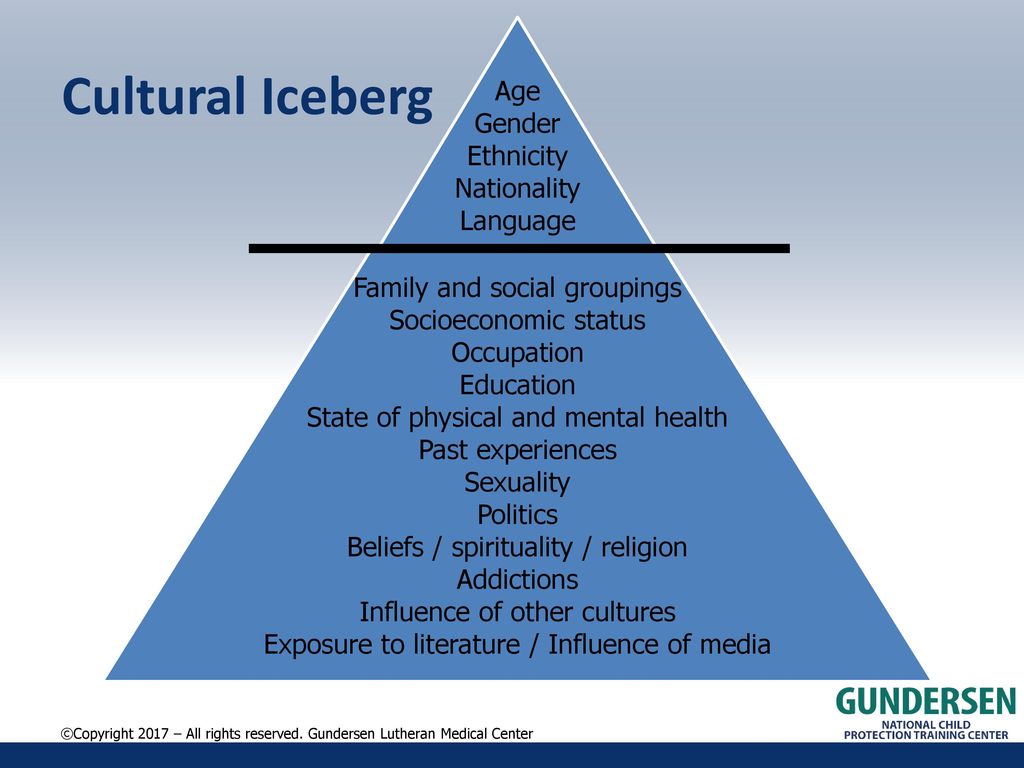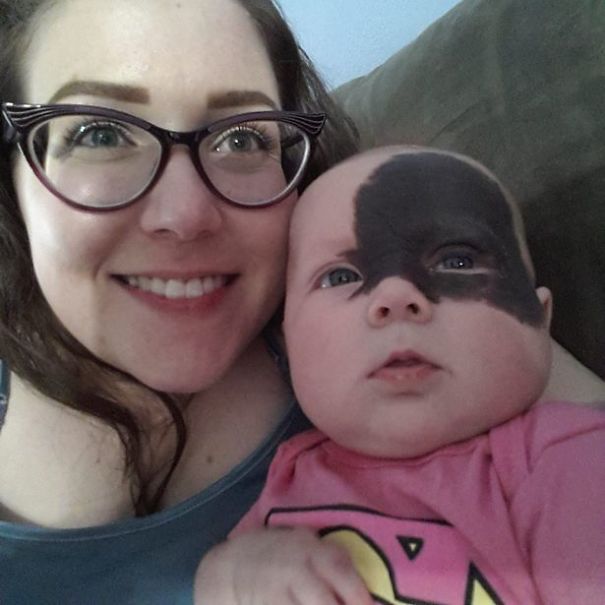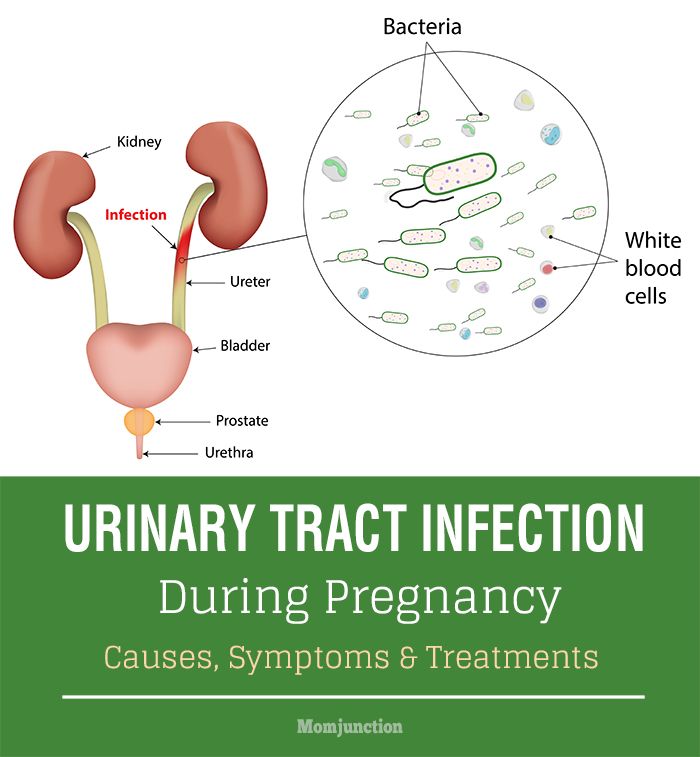Likelihood of pregnancy 3 days before ovulation
Right Time For Sex , When Do You Ovulate ?
When are you more likely to conceive?
We’re talking about the 'fertile window’ – the days in a woman’s menstrual cycle when pregnancy is possible. The ‘fertile window’ depends on the length of the menstrual cycle, which varies among women.
The ‘fertile window’ is the day an egg is released from the ovary (ovulation) and the five days beforehand. Having sex (intercourse) during this time gives you the best chance of getting pregnant.
Ovulation Calculator
What day did you your most recent period start?
Number of days in your cycle Please select20 Days21 Days22 Days23 Days24 Days25 Days26 Days27 Days28 Days29 Days30 Days31 Days32 Days33 Days34 Days35 Days36 Days37 Days38 Days39 Days40 Days41 Days42 Days43 Days44 Days45 Days
Your ovulation day
Most fertile time
-
What is an ovulation calculator and how does it help you get pregnant?
This ovulation calculator or ovulation calendar can help you work out your most fertile time.
These are the days you are most likely to get pregnant.
It can also estimate your due date if you do become pregnant during your next fertile days.
Others ways to help you work out when you're ovulating:
- Notice changes in vaginal mucus
A few days before ovulation, you may notice your vaginal mucus becomes clear, slick and slippery, and feels a bit like egg white.
This is a sign that ovulation is about to happen. It’s the best time to have sex, as sperm travel more easily in this kind of mucus.
- Use an ovulation predictor kit
You can use a predictor kit from a supermarket or pharmacy, to test your urine for signs of ovulation. If you start testing your urine a few days before the day you next expect to ovulate, a positive result means you are going to ovulate within the next 24 to 36 hours (one to two days).

-
Facts about timing
Ovulation is when a mature egg is released from the ovary. The egg then moves down the fallopian tube where it can be fertilised. If sperm are in the fallopian tube when the egg is released, there is a good chance that the egg will be fertilised, creating an embryo, which can grow into a baby.
Pregnancy is technically only possible if you have sex during the five days before ovulation or on the day of ovulation. But the most fertile days are the three days leading up to and including ovulation. Having sex during this time gives you the best chance of getting pregnant.
By 12-24 hours after ovulation, a woman is no longer able to get pregnant during that menstrual cycle because the egg is no longer in the fallopian tube.
There’s almost no chance of getting pregnant if you have sex before or after the fertile window (but if you’re not trying to get pregnant, don’t rely on this – contraception is your best option!).

-
How to know when you’re ovulating
Knowing when you ovulate can help you plan for sex at the right time and improve your chance of getting pregnant. You can keep track of your menstrual cycles on a chart, in a diary, or on a free period-tracker app on your smartphone.
To work out the length of your menstrual cycle, record the first day you start bleeding (first day of your period). This is day 1. The last day of your cycle is the day before your next period begins.
- What is a ‘menstrual cycle’ and a ‘period’?
Some people think the ‘menstrual cycle’ and a ‘period’ are the same thing.
A period is when you bleed (or menstruate).

A menstrual cycle starts on the day when a period starts (day 1) and ends the day before the next period. A cycle’s length is considered normal if it’s between 21 and 35 days. They can vary between women and from one cycle to the next.
- Working out your ‘average’ menstrual cycle length
If your menstrual cycles are different lengths (most women’s cycles are) you can work out your average cycle length.
The number of days in a woman’s menstrual cycle can vary month to month. Periods are not always regular. It can be useful to work out an ‘average’ cycle length, based on the length of three menstrual cycles, to estimate when you’re most likely to be ovulating.
If you add the number of days in three cycles and divide the total number by three, it gives you your average cycle length.
Example
Sarah tracked her last three menstrual cycles by counting the time from the first day of one period, to the day before the next period.
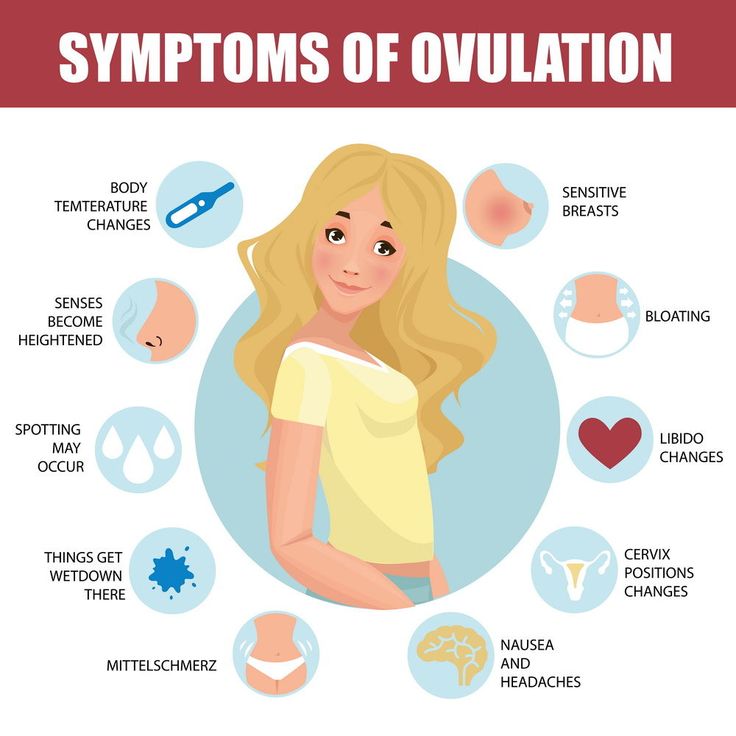
Cycle 1 was 28 days; Cycle 2 was 32 days; Cycle 3 was 27 days
28 + 32 + 27 = 87
87 divided by 3 = 29
So the average length of Sarah’s menstrual cycles is 29 days.
- Working out your most fertile days
When you know your average menstrual cycle length, you can work out when you ovulate.
Ovulation happens about 14 days before your period starts.
- If your average menstrual cycle is 28 days, you ovulate around day 14, and your most fertile days are days 12, 13 and 14.
- If your average menstrual cycle is 35 days ovulation happens around day 21 and your most fertile days are days 19,20 and 21.
- If you have shorter cycles, say 21 days, ovulation happens around day 7 and your most fertile days are days 5, 6 and 7.
Your most fertile days are the three days leading up to and including the day of ovulation.
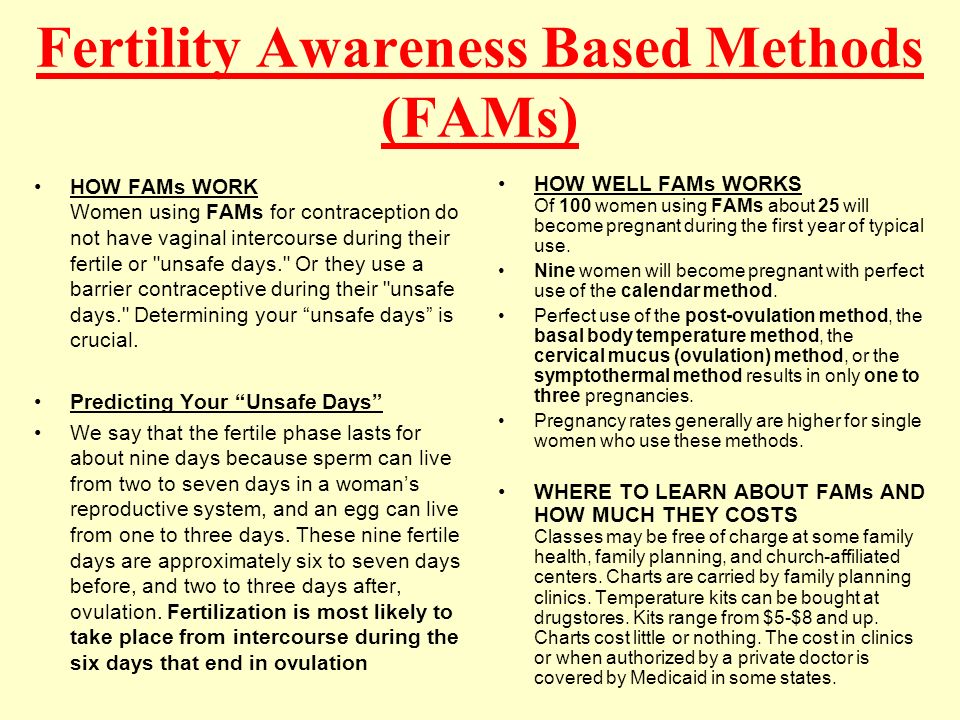
Some women have very irregular cycles or find it difficult to work out an average cycle length. This can make it hard to work out when ovulation happens. If it’s all too hard, having sex every 2-3 days covers all bases and improves your chance of getting pregnant.
Myth busting
- MYTH
A woman can get pregnant any time of the month.
- FACT
A woman can only get pregnant on a few days during her menstrual cycle.
Why?
Because eggs and sperm only live for a short time:
- Sperm live for around five days.
- Eggs can only be fertilised for around 24 hours (one day) after being released from the ovary.
Eggs and sperm need to come together at the right time for fertilisation to happen to create an embryo.
Getting the timing right
If you're trying to get pregnant, timing is everything. Dr Karin Hammarberg explains how to work out when you are ovulating and the right time to have sex to improve your chance of pregnancy.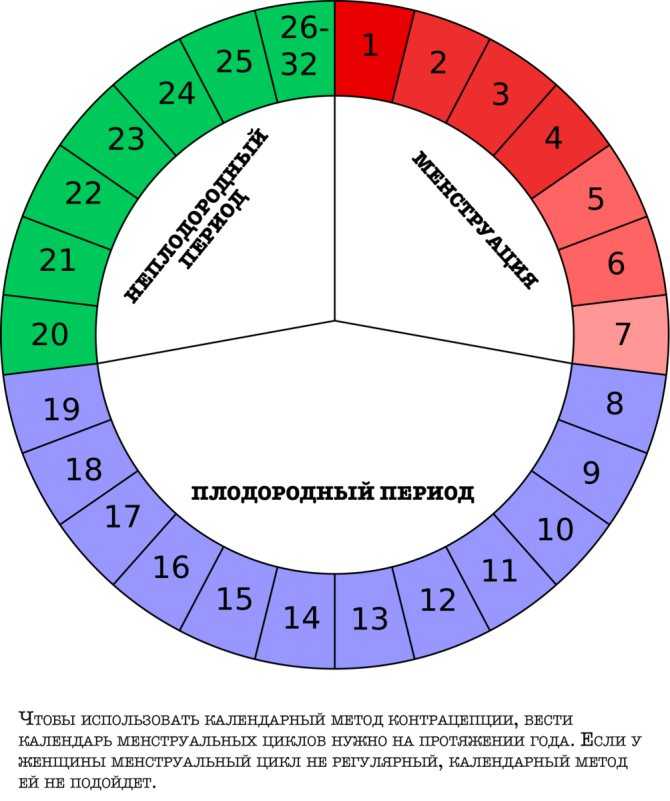
-
What are the chances?
Having sex as close as possible to the time of ovulation increases the chance of pregnancy.
If a woman has sex six or more days before she ovulates, the chance she will get pregnant is virtually zero.
If she has sex five days before she ovulates, her probability of pregnancy is about 10 percent.
If she has sex on the day of ovulation, or the two days before, the chance of getting pregnant is around 30 percent.
These are average figures and depend on a woman’s age.
When does preconception health begin?
Professor Sarah Robertson, Director of Robinson Research Institute, University of Adelaide, highlights the key time before pregnancy that your health is most important to ensure your child has the best start to life.
How to know you are ovulating
Kerry Hampton, a registered nurse and fertility specialist, discusses the importance of fertility awareness, and how to determine your fertile window to improve your chances of conceiving.
- References
- American Society for Reproductive Medicine, Optimizing natural fertility, https://www.reproductivefacts.org/news-and-publications/patient-fact-sheets-and-booklets/documents/fact-sheets-and-info-booklets/optimizing-natural-fertility/
- Berglund Scherwitzl, et al. (2015). Identification and prediction of the fertile window using Natural Cycles. The European Journal of Contraception and Reproductive Health Care, 20(5), 403-408. doi:10.3109/13625187.2014.988210
- Ecochard, R., et al. (2015). Self-identification of the clinical fertile window and the ovulation period.
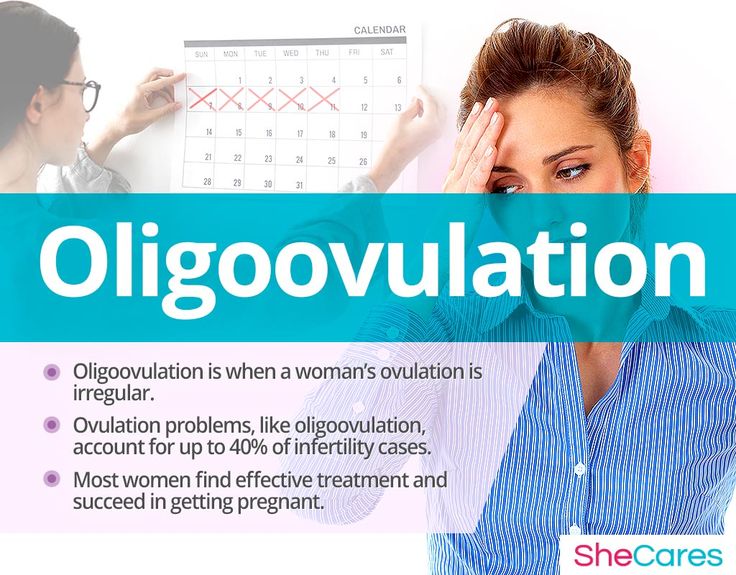 Fertility and Sterility, 103(5), 1319-1325.e1313. doi: http://dx.doi.org/10.1016/j.fertnstert.2015.01.031
Fertility and Sterility, 103(5), 1319-1325.e1313. doi: http://dx.doi.org/10.1016/j.fertnstert.2015.01.031 - Pfeifer, S., et al. (2017). Optimizing natural fertility: a committee opinion. Fertility and Sterility, 107(1), 52-58. doi: 10.1016/j.fertnstert.2016.09.029
- Stanford, J. B. (2015). Revisiting the fertile window. Fertility and Sterility, 103(5), 1152-1153. doi: http://dx.doi.org/10.1016/j.fertnstert.2015.02.015
- Stanford, et al. (2002). Timing intercourse to achieve pregnancy: current evidence. Obstetrics and Gynecology, 100(6), 1333-1341.
- Stephenson, J., et al. (2018). Before the beginning: nutrition and lifestyle in the preconception period and its importance for future health. The Lancet, 10.1016/S0140-6736(18)30311-8 doi: 10.1016/S0140-6736(18)30311-8
- Vélez, M. Pet al. (2015). Female exposure to phenols and phthalates and time to pregnancy: the Maternal-Infant Research on Environmental Chemicals (MIREC) Study. Fertility and Sterility.
 doi: 10.1016/j.fertnstert.2015.01.005
doi: 10.1016/j.fertnstert.2015.01.005 - Verón, G. L., et al. (2018). Impact of age, clinical conditions, and lifestyle on routine semen parameters and sperm kinematics. Fertility and Sterility, 110(1), 68-75.e64. https://doi.org/10.1016/j.fertnstert.2018.03.016
- Waylen, A. Let al. (2009). Effects of cigarette smoking upon clinical outcomes of assisted reproduction: a meta-analysis. Hum Reprod Update, 15(1), 31-44.
- Zenzes, M. T. (2000). Smoking and reproduction: gene damage to human gametes and embryos. Hum Reprod Update, 6(2), 122-131.
Page created on: 28/08/2018 | Last updated: 03/02/2023
Chances of Getting Pregnant on Ovulation Day – Proov
Written by: Dr. Amy Beckley, PhD, Founder and Inventor of the Proov test — the first and only FDA-cleared test to check for successful ovulation at home.
Written on: 5/25/22
If you’re trying to conceive, you may know by now how important timing is. After all, timing intercourse around ovulation is critical to conception.
After all, timing intercourse around ovulation is critical to conception.
As you move through the different phases of your cycle, your chances of getting pregnant change as well. Understanding the chances of getting pregnant throughout your cycle — especially your chances of getting pregnant on ovulation day — may be the key to your success!
It’s no secret that in order to get pregnant, egg and sperm need to meet. An egg is only released during ovulation, about midway through your cycle.
Once an egg has been released, they can only survive for 12-24 hours. That means sperm has a really short amount of time in which it can fertilize the egg.
Additionally, his sperm needs some time to swim all the way through your reproductive system to reach the egg. Because of both of these factors, the chances of getting pregnant on ovulation day are about 20%.
You may be surprised by how low that number is — we sure were! The good news is that ovulation day is not the only day each cycle when it’s possible to get pregnant. Let’s keep going.
Let’s keep going.
While eggs can only live for no more than a day after ovulation, sperm can actually have a much longer life span. Healthy sperm may survive in your reproductive tract for up to 5 days.
In fact, having intercourse during the few days leading up to ovulation can help ensure the sperm is ready and waiting for the egg once ovulation occurs. You should start “trying” ideally up to 3 days before ovulation actually occurs.
Here are the day-specific pregnancy probabilities based on the day of intercourse:
- 3 days before ovulation: 27%
- 2 days before ovulation: 33%
- 1 day before ovulation: 41%
- Day of ovulation: 20%
- 1 day post ovulation: 8%
You’ll see that the probability of pregnancy significantly drops on the day of and day after ovulation. Waiting too late in your cycle may hurt your chances of conception.
This is why understanding your cycle and knowing when you’re ovulating is so important!
Understanding your cycle and knowing when you ovulate is so important when trying to conceive!
How do I know when I’m ovulating?Ovulation typically occurs about midway through your cycle. If you have a regular cycle — meaning the amount of time between each period is consistent — you may be able to guess when ovulation will occur or simply time intercourse just before the middle of your cycle.
If you have a regular cycle — meaning the amount of time between each period is consistent — you may be able to guess when ovulation will occur or simply time intercourse just before the middle of your cycle.
However, not everyone has a regular cycle and ovulation can vary by a day or two even in those with regular cycles. This is where tracking your cycle becomes important.
Changes in our fertility hormone levels prepare the body for and trigger ovulation each cycle. Understanding and monitoring these hormone shifts is the most tried and true way to know when you’re ovulating.
At-home ovulation tests most often measure luteinizing hormone (LH) levels. A dramatic increase in LH (also called a “surge”) is what triggers the ovary to release the egg.
Ovulation should occur about 12-36 hours after an LH surge. That means a positive ovulation test (which indicates an LH surge) identifies your 2 most fertile days each cycle.
But, as we know, there are a few more days each cycle when you can be fertile. Another hormone, estrogen, rises even before LH as your body gears up for ovulation.
Another hormone, estrogen, rises even before LH as your body gears up for ovulation.
Ovulation tests that measure estrogen and LH, like Proov Complete, provide even more fertile days each cycle. That way you have the maximum amount of time to try!
While directly measuring your hormone levels with tools like ovulation tests are the best way to track your cycle and know when you’re ovulating, there are a few other ways to predict ovulation. Here are just a few:
- Calendar-based apps: Calendar-based apps approximate your ovulation day by using data you fed them during previous cycles. They may get it right if your period is like clockwork, but often don’t work well for people who have irregular periods.
- Cervical mucus monitoring: Monitoring changes in cervical mucus is one of the oldest ovulation tracking methods, completely free and easy to do. As estrogen rises and you approach the LH surge, your vaginal discharge turns into an egg-white, stretchy mucus that is sperm friendly.
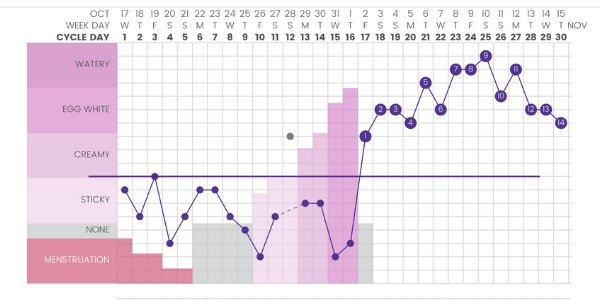 Note that semen leftovers may be mistaken for fertile cervical mucus and dehydration can impact cervical mucus production.
Note that semen leftovers may be mistaken for fertile cervical mucus and dehydration can impact cervical mucus production. - Mittelschmerz: Mittelschmerz is a lower pelvic (usually one-sided) pain, associated with ovulation. Some women can swear they know when they release an egg, and they probably do. The problem is that lower pelvic pain may occur for several reasons and this makes it a rather unreliable marker for the prediction of ovulation.
Not quite! Remember that ovulation tests measure LH which surges right before ovulation should occur. While an LH surge is a fairly reliable indicator that ovulation is approaching, it doesn’t actually tell you if you have ovulated.
In fact, many women, especially those with PCOS, postpartum, or in perimenopause may experience either several LH peaks or high LH levels throughout their cycle.
The only way to know if ovulation actually occurred is to confirm it, with a PdG test like Proov Confirm.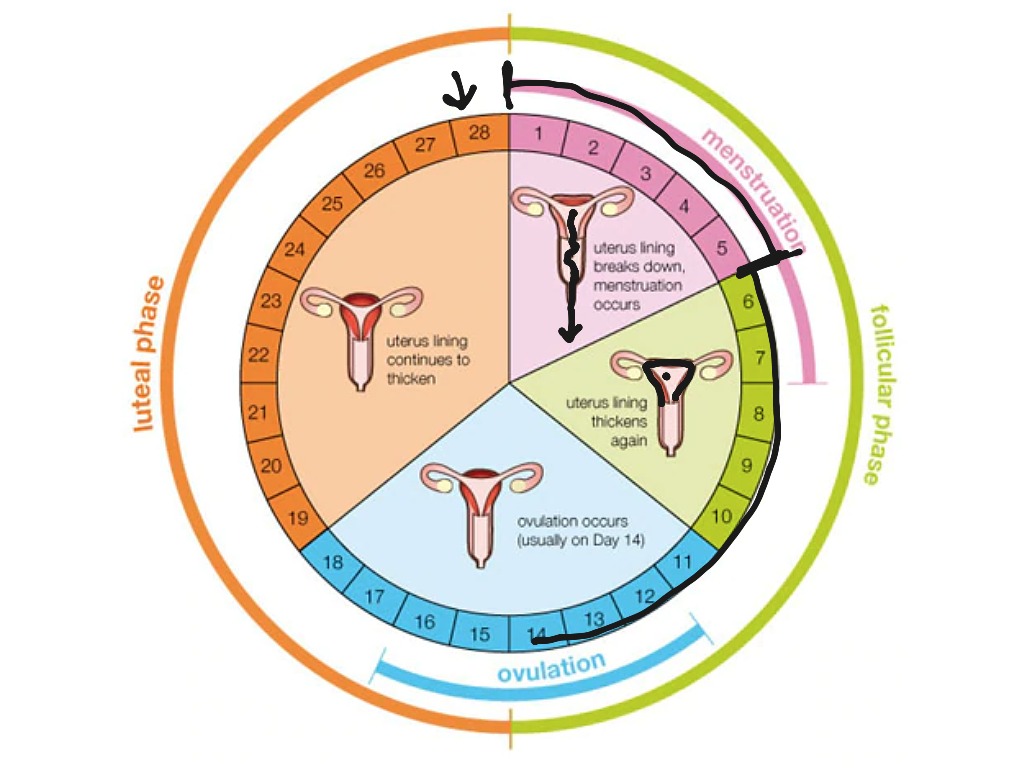 PdG is only released after ovulation occurs and is necessary for preparing the body for implantation and pregnancy.
PdG is only released after ovulation occurs and is necessary for preparing the body for implantation and pregnancy.
If you want to increase your chances of pregnancy even more, you’ll want to test your PdG levels during the implantation window. Studies show that elevated PdG levels during the implantation window (after ovulation) are correlated with a 92% chance of successful pregnancy, compared to just a 19% chance in those with low PdG levels.
Timing intercourse just before ovulation day can help increase your chances of pregnancy!
Signs of ovulation | Clinic MEdel
OVULATION (from lat. ovum - egg) - release of a mature egg capable of fertilization from the ovarian follicle into the abdominal cavity; stage of the menstrual cycle (ovarian cycle). Ovulation in women of childbearing age occurs periodically (every 21-35 days). The frequency of ovulation is regulated by neurohumoral mechanisms, mainly gonadotropic hormones of the anterior pituitary gland and ovarian follicular hormone. nine0003 Ovulation contributes to the accumulation of follicular fluid and thinning of the ovarian tissue located above the protruding pole of the follicle. The rhythm of ovulation , which is constant for every woman, undergoes changes within 3 months after an abortion, within a year after childbirth, and also after 40 years, when the body is preparing for the premenopausal period. Stops ovulation with the onset of pregnancy and after the extinction of menstrual function. Setting a deadline ovulation is important when choosing the most effective time for fertilization, artificial insemination and in vitro fertilization.
nine0003 Ovulation contributes to the accumulation of follicular fluid and thinning of the ovarian tissue located above the protruding pole of the follicle. The rhythm of ovulation , which is constant for every woman, undergoes changes within 3 months after an abortion, within a year after childbirth, and also after 40 years, when the body is preparing for the premenopausal period. Stops ovulation with the onset of pregnancy and after the extinction of menstrual function. Setting a deadline ovulation is important when choosing the most effective time for fertilization, artificial insemination and in vitro fertilization.
Signs of ovulation
Subjective signs of ovulation may be short-term pain in the lower abdomen. objective signs of ovulation are an increase in mucous discharge from the vagina and a decrease in rectal (basal) temperature on the day of ovulation with an increase in it the next day, an increase in the content of progesterone in the blood plasma, etc.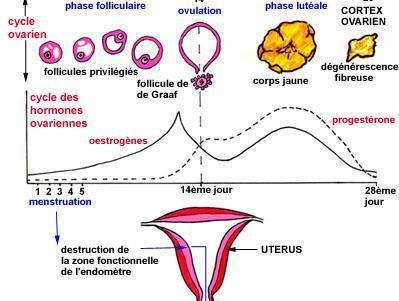 Violation of ovulation is due to dysfunction of the hypothalamic-pituitary-ovarian system and can be caused by inflammation of the genitals, dysfunction of the adrenal cortex or thyroid gland, systemic diseases, tumors of the pituitary and hypothalamus , stressful situations. Lack of ovulation at childbearing age (anovulation) is manifested by a violation of the rhythm of menstruation by the type of oligomenorrhea (menstruation lasting 1-2 days), amenorrhea, dysfunctional uterine bleeding. Absence ovulation (anovulation) is always the cause of a woman's infertility. Methods for restoring ovulation are determined by the cause that caused anovulation, and require an appointment with a gynecologist and special treatment.
Violation of ovulation is due to dysfunction of the hypothalamic-pituitary-ovarian system and can be caused by inflammation of the genitals, dysfunction of the adrenal cortex or thyroid gland, systemic diseases, tumors of the pituitary and hypothalamus , stressful situations. Lack of ovulation at childbearing age (anovulation) is manifested by a violation of the rhythm of menstruation by the type of oligomenorrhea (menstruation lasting 1-2 days), amenorrhea, dysfunctional uterine bleeding. Absence ovulation (anovulation) is always the cause of a woman's infertility. Methods for restoring ovulation are determined by the cause that caused anovulation, and require an appointment with a gynecologist and special treatment.
Some women experience peak sexual arousal on days 90,003 of ovulation 90,004. However, the use of a physiological method of contraception against pregnancy, based on sexual abstinence during ovulation , is especially difficult for young spouses, whose frequency of sexual intercourse reaches a fairly high level.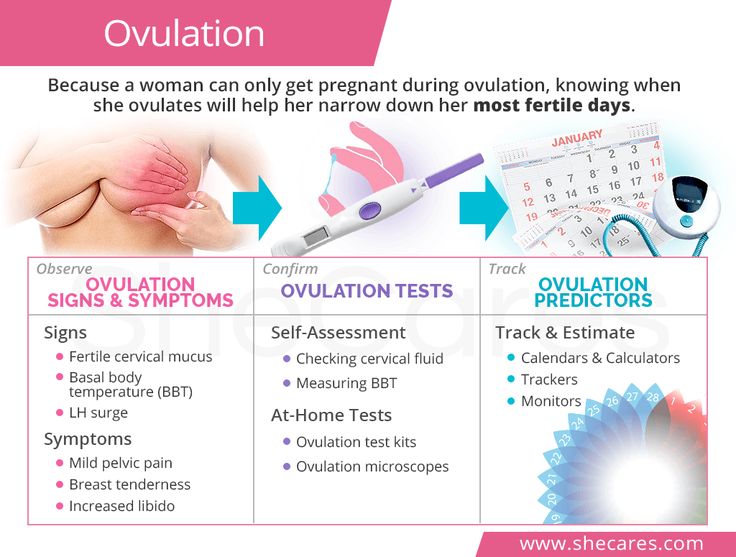 In addition, with strong love excitement and nervous stress, additional ovulation can occur (especially with episodic, irregular intercourse), and then not one, but two eggs mature in one menstrual cycle. This should be remembered when choosing one or another method of contraception. nine0017
In addition, with strong love excitement and nervous stress, additional ovulation can occur (especially with episodic, irregular intercourse), and then not one, but two eggs mature in one menstrual cycle. This should be remembered when choosing one or another method of contraception. nine0017
As soon as every healthy girl at the age of 11-15 begins to menstruate, which is an indicator of her body's readiness for childbearing, then there are problems associated with counting the days of the menstrual cycle and the legitimate question why menstruation does not occur, or vice versa, why the long-awaited pregnancy does not occur. . This makes a woman think and wait all the time, be in the dark about what happens to her every month. And so every month for decades. nine0017
Length of menstruation and cycle
Ideal menstruation lasts 3-5 days and repeats every 28 days. However, for some women, this cycle takes 19 days or even less, while for others it lasts from 35 to 45 days, which is a feature of their body, and not a violation of menstrual function.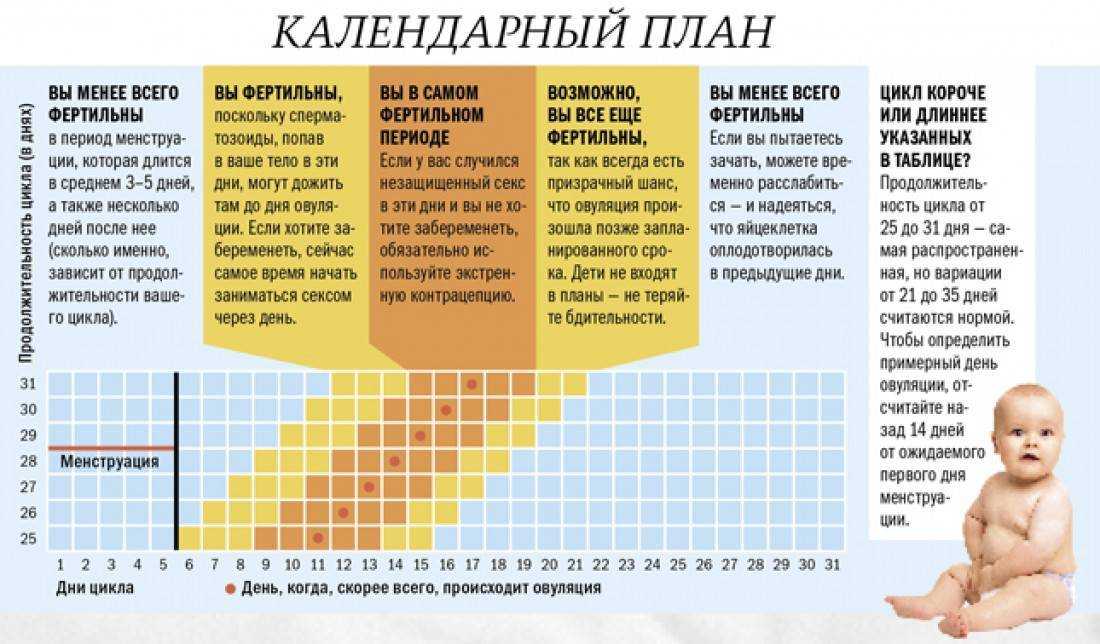 The duration of menstruation also, depending on the organism, can vary within a week. All this should not cause alarm in a woman, but a delay of more than two months, called opsometry or more than six months - amenorrhea, should alert the woman and make sure to find out the cause with a gynecologist. nine0017
The duration of menstruation also, depending on the organism, can vary within a week. All this should not cause alarm in a woman, but a delay of more than two months, called opsometry or more than six months - amenorrhea, should alert the woman and make sure to find out the cause with a gynecologist. nine0017
Length of menstrual cycle
The menstrual cycle is a complex physiological process that continues in women up to 45-55 years. It is regulated by the so-called sex centers located in the middle part of the diencephalon - the hypothalamus. The changes that occur during the menstrual cycle are most pronounced in the uterus and ovaries. In the ovary, under the influence of hormones produced by the ovarian follicles, partly by the adrenal cortex and testes, the main follicle, which contains the egg, grows and matures. The mature follicle ruptures and the egg, together with the follicular fluid, enters the abdominal cavity, and then into the fallopian tube.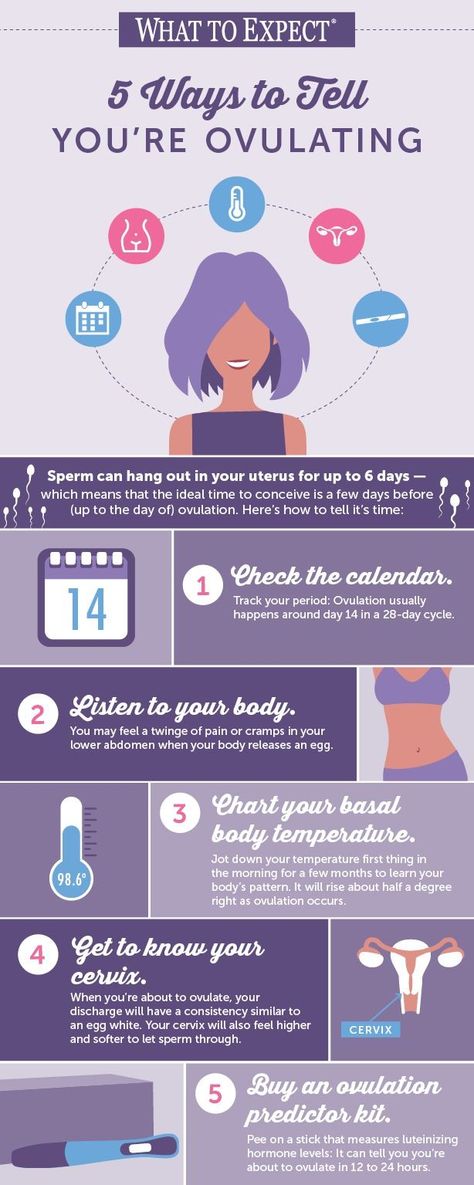 The process of rupture of the follicle and the release of a mature (suitable for fertilization) egg from its cavity is called ovulation , which, with a 28-day cycle, occurs most often between the 13th and 15th days.
The process of rupture of the follicle and the release of a mature (suitable for fertilization) egg from its cavity is called ovulation , which, with a 28-day cycle, occurs most often between the 13th and 15th days.
Corpus luteum, estrogen, progesterone
A corpus luteum forms at the site of the ruptured follicle. These morphological changes in the ovary are accompanied by the release of sex steroid hormones - estrogens and progesterone. Estrogens are secreted by the maturing follicle, and progesterone by the corpus luteum.
The release of estrogen has two maxima - during ovulation and during the period of maximum activity of the corpus luteum. So, for example, if the normal estrogen content is about 10 µg/l, then during ovulation it is about 50 µg/l, and during pregnancy, especially towards the end of it, the estrogen content in the blood increases to 70-80 µg/l per due to a sharp increase in the biosynthesis of estrogens in the placenta.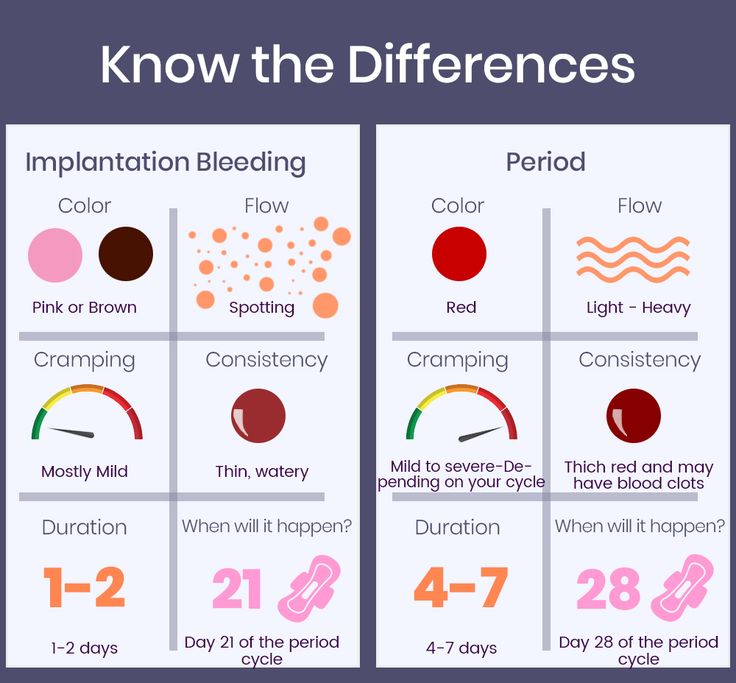
Together with progesterone, estrogens promote the implantation (introduction) of a fertilized egg, maintain pregnancy and promote childbirth. Estrogens play an important role in the regulation of many biochemical processes, are involved in carbohydrate metabolism, lipid distribution, stimulate the synthesis of amino acids, nucleic acids and proteins. Estrogens contribute to the deposition of calcium in bone tissue, delay the release of sodium, potassium, phosphorus and water from the body, that is, increase their concentration both in the blood and in electrolytes (urine, saliva, nasal secretions, tears) of the body. nine0017
The secretion of estrogens is controlled by the anterior pituitary gland and its genadotropic hormones: follicle-stimulating (FSH) and luteinizing (LH).
Under the influence of estrogens in the first phase of the menstrual cycle, called folliculin, regeneration occurs in the uterus, that is, the restoration and growth of its mucous membrane - the endometrium, the growth of glands that stretch in length and become convoluted.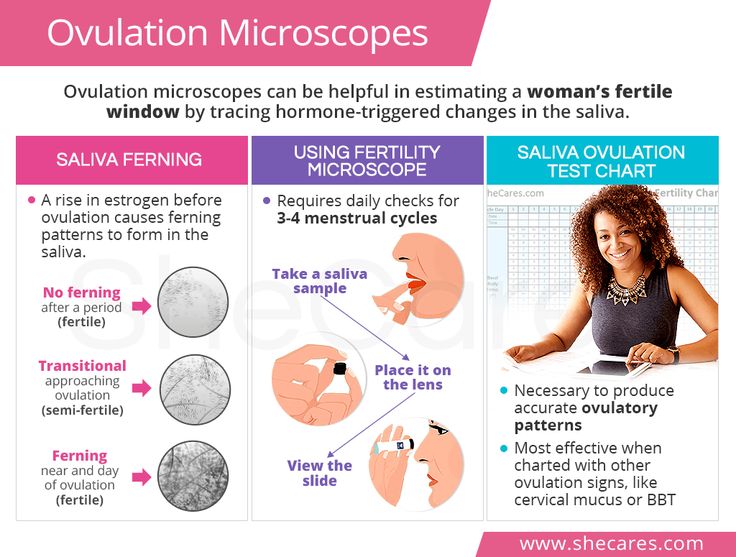 The mucous membrane of the uterus thickens 4-5 times. In the glands of the cervix, the secretion of mucous secretion increases, the cervical canal expands, and becomes easily passable for spermatozoa. In the mammary glands, the epithelium grows inside the milk ducts. nine0017
The mucous membrane of the uterus thickens 4-5 times. In the glands of the cervix, the secretion of mucous secretion increases, the cervical canal expands, and becomes easily passable for spermatozoa. In the mammary glands, the epithelium grows inside the milk ducts. nine0017
In the second phase, called luteal (from the Latin word luteus - yellow), under the influence of progesterone, the intensity of metabolic processes in the body decreases. The growth of the mucous membrane of the body of the uterus stops, it becomes loose, edematous, a secret appears in the glands, which creates favorable conditions for attaching a fertilized egg to the mucous membrane and developing the embryo. The glands stop secreting mucus, the cervical canal closes. In the mammary glands, from the overgrown epithelium of the end sections of the milk ducts, alveoli arise, capable of producing and secreting milk. nine0017
If pregnancy does not occur, the corpus luteum dies, the functional layer of the endometrium is rejected, and menstruation occurs.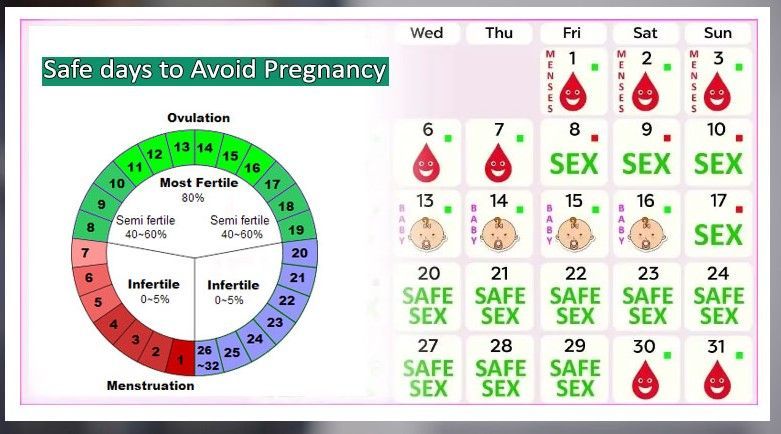 Monthly bleeding varies from three to seven days, the amount of blood lost is from 40 to 150 g.
Monthly bleeding varies from three to seven days, the amount of blood lost is from 40 to 150 g.
It should be noted that different women have a noticeable difference in the timing of ovulation . And even for the same woman, the exact timing of the onset fluctuates in different months. In some women, cycles are characterized by exceptional irregularity. In other cases, cycles may be longer or shorter than the average - 14 days. In rare cases, it happens that in women with a very short cycle ovulation occurs around the end of the period of menstrual bleeding, but still, in most cases, ovulation occurs quite regularly.
If, for one reason or another, ovulation does not occur , the endometrial layer in the uterus is thrown out during menstruation. If the fusion of the egg and sperm has occurred, then the cytoplasm of the egg begins to vibrate very strongly, as if the egg is experiencing an orgasm. Sperm penetration is the final stages of egg maturation. All that remains of a spermatozoon is its nucleus, where 23 chromosomes are densely packed (half the set of a normal cell). The sperm nucleus is now rapidly approaching the egg nucleus, which also contains 23 chromosomes. The two cores are slowly touching. Their shells dissolve and they merge, as a result of which they are divided into pairs and form 46 chromosomes. Of the 23 chromosomes of the sperm, 22 are completely analogous to the chromosomes of the egg. They determine all the physical characteristics of a person except gender. In the remaining pair from the egg there is always an X chromosome, and from the sperm there can be an X or Y chromosome. Thus, if there are 2 XX chromosomes in this set, then a girl will be born, if XY, then a boy. nine0017
Studies conducted at the National Institute of Environmental Medical Problems (North Carolina) showed that the time of conception in relation to the time of onset of ovulation depends not only on the actual conception of a child, but also on its gender.
The probability of conception is maximum on day of ovulation and is estimated at about 33%. A high probability is also noted on the day before ovulation - 31%, two days before it - 27%. Five days before ovulation the probability of conception is estimated to be 10% four days before ovulation - 14% and three days - 16%. Six days before ovulation and the day after ovulation, the probability of conception during sexual intercourse is very small.
Considering that the average “lifespan” of spermatozoa is 2-3 days (in rare cases it reaches 5-7 days), and the female egg remains viable for about 12-24 hours, then the maximum duration of the “dangerous” period is 6- ninedays and the “dangerous” period corresponds to the phase of slow rise (6-7 days) and rapid decline (1-2 days) before and after the day of ovulation , respectively. Ovulation , as noted above, divides the menstrual cycle into two phases: the follicle maturation phase, which, with an average cycle duration of 10-16 days, and the luteal phase (corpus luteum phase), which is stable, independent of the duration of the menstrual cycle and is 12-16 days. The phase of the corpus luteum is referred to as the period of absolute infertility, it begins 1-2 days after ovulation and ends with the onset of a new menstruation.
When is a woman most fertile?
If you are a woman taking precautions to prevent pregnancy, or if you are thinking about pregnancy in some way in the future, the issue of fertility usually remains in the background.
The question of when a woman is most fertile has two aspects.
First, is the menstrual cycle and the period when a woman is most fertile. nine0017
To figure out the arithmetic, a fertility calendar or an ovulation calculator will help. The second aspect of the question concerns biological age and the stage of life at which women are most fertile. In our article, we will look at the monthly cycle, the days that are the most fertile during this cycle, and various means of monitoring and predicting ovulation. This makes it possible to predict the time of maximum fertility with some accuracy.
nine0119 Second, , we look at the stages of fertility at various times in a woman's life and their impact on her ability to conceive.
It is well known that fertility peaks at age 20 and begins to decline after age 30; after 35 years, natural conception rates begin to drop sharply. However, in today's society, many women, for understandable financial and social reasons, choose to delay childbearing until the age of thirty. Thus, we are faced with the paradoxical situation where many women, who have long sought to prevent pregnancy in their younger years, find themselves in a situation where they begin to look for ways to increase their chances of conceiving. nine0017
When is a woman most fertile? What does the menstrual cycle show?
In a woman, the ability to conceive is maximum a day or two before and after ovulation. This is when the egg is released from the ovaries. You can calculate with a reasonable degree of accuracy when ovulation will occur, especially if your cycle is regular, anywhere between 24 and 35 days. Consider the start of your period (bright spotting) as the first day of your cycle, and the day before the next as the end of your cycle. Ovulation usually occurs 12-16 days before the start of the next cycle. Thus, if you have a regular 28-day cycle, then the indicator remains the same: ovulation occurs on the 12th-16th day. However, fertile time is not limited to these few days. Remember that you can get pregnant if you have unprotected sex at any time during the week before ovulation, as sperm can live in a woman's genital tract for up to seven days. nine0017
Fertility specialists generally advise that if you are hoping to get pregnant, it is advisable to specifically schedule contacts around this time, as it can be difficult to calculate the exact day of ovulation, and trying to have sex on a schedule can cause unnecessary stress and anxiety. For the best chance of getting pregnant as long as there are no underlying fertility problems, it is recommended to have intercourse every 2-3 days during your cycle. In addition, fertility calendars, an ovulation test, and self-monitoring for signs of ovulation can help predict the ideal time to conceive. nine0017
Menstrual calendar
It could be an old-fashioned pen and paper, a spreadsheet, or one of the many online calendars available. They are also known as ovulation calendars or ovulation calculators. They all do the same thing: keep track of your menstrual cycle dates and use the 12-16 day calculation outlined above to determine the days on which you are most likely to conceive.
Ovulation Tests
These are test kits that measure the level of luteinizing hormone (LH) in your urine. The essence of the measurement is to capture the surge in LH levels that occurs during your cycle a couple of days before ovulation. There are also tests that measure the same hormone pulsation but use a saliva sample. In these tests, saliva takes on the appearance of a fern-like pattern when it dries on glass.

